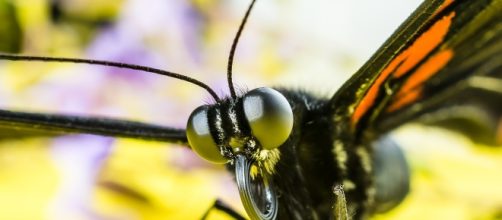A study from the University of Sheffield concluded that insects could see the world in far greater resolution than previously thought. Before this study, scientists thought that insects are not capable of seeing finer details of their surroundings.
The tiny lens capped “eye-units” of insects somehow obstruct their view resulting in a low-resolution or pixelated images of the world. This is, however, is refuted by the new study.
Insect vs. human eye
Scientists used to believe that insects have inferior vision compared to humans who have a single lens and retinal sensors.
These sensors act as “camera chips” in the eye that makes it easier focus on subjects resulting into clearer, more detailed view. In humans, changing the “eye lens” shape keeps an object in focus despite its distance or movements. The densely packed retinal photoreceptor array in the human eye is responsible for producing high-resolution images.
But a new study from the University of Sheffield’s Department of Biomedical Science (in collaboration affiliates in Beijing, Lisbon, and Cambridge) discovered that insects also have a clearer vision than previously thought. The small creatures are apparently capable of producing high-resolution images with their eyes, thanks to the photoreceptor cells inside their eyes that react to the motion of the subjects.
How insect eye works
These tiny creatures have thousands of small lenses that do not move. However, it was discovered that the photoreceptor cells underneath the networks of thousand lenses are capable of moving rapidly in order to focus on moving subjects. This ability makes the insect vision clearer and more detailed.
Based on the new study, the “twitching” that occurs underneath an insect’s eye lenses happens so fast that the naked eye can not observe it.
The movement of the microscopic light sensors can only be observed in a light simulation using a customized microscope equipped with a high-speed camera system.
Taking images to see its surroundings is an innate behavior of their species. The researchers discovered that the creatures view the world snapshot by snapshot or in “burst” mode in tune with their head and eye movements.
With the help of the microscopic photoreceptor cell twitching underneath their physical eyes, insects can have a finer and more detailed view of their surroundings.
The astonishing findings were published in the journal eLife today, Sept 5, 2017. According to the researchers, the findings of the new study can be used to enhance further robotic sensors that adopt the natural behaviors of insects.


